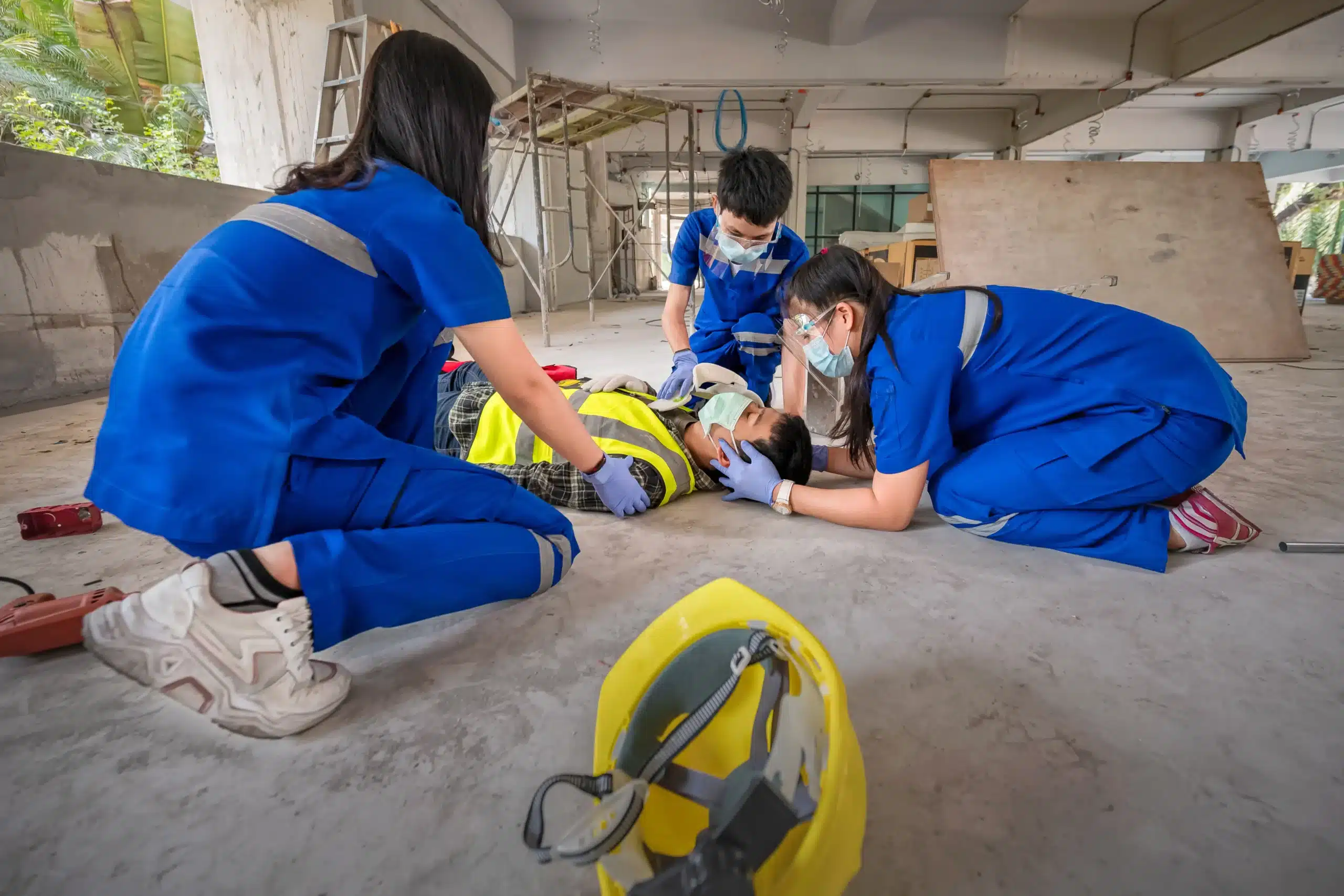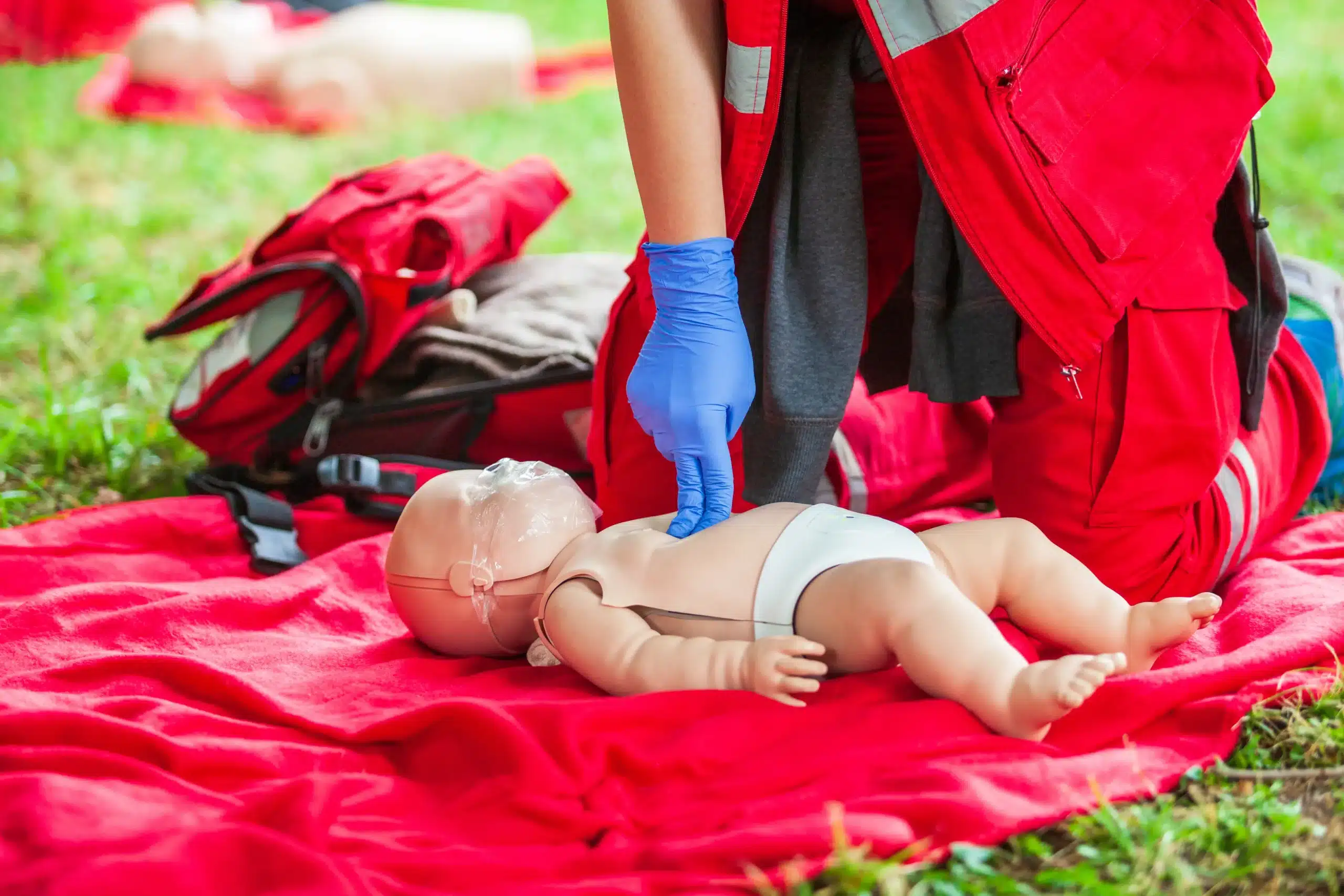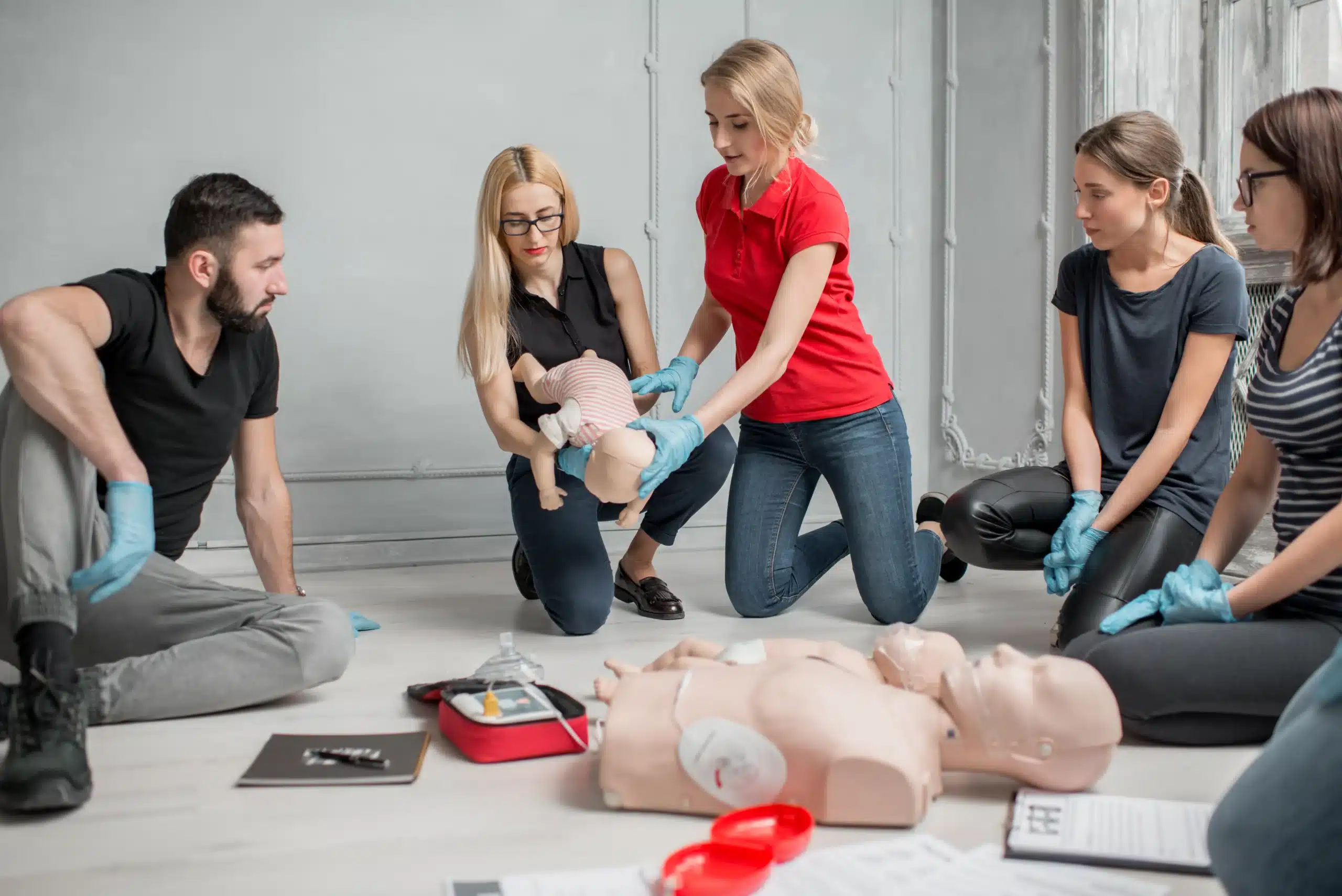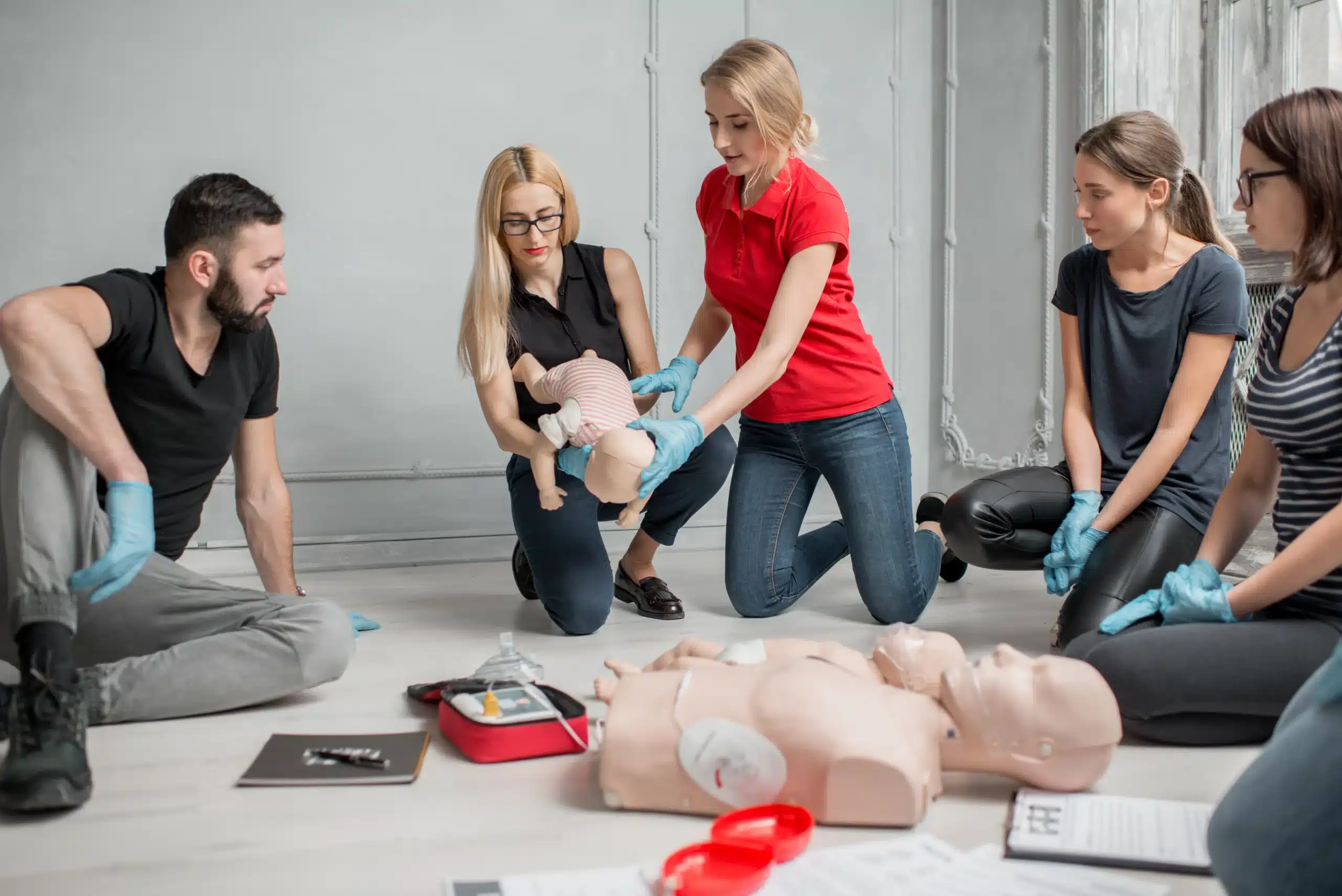Working in healthcare in Santa Clara means being ready for anything, especially when it comes to our youngest patients. PALS HeartCode certification provides the skills and confidence to handle pediatric emergencies, but finding the right training can be tricky. This guide breaks down everything you need to know about PALS HeartCode in Santa Clara, from course content and local training centers to tips for maximizing your learning and overcoming common challenges. Whether you’re a seasoned healthcare professional or just starting your career, we’ll help you understand the importance of PALS HeartCode, how it enhances community health, and how to get certified. We’ll also explore the blended learning format, combining online convenience with essential hands-on practice, making PALS HeartCode accessible and effective for busy professionals in Santa Clara.
Key Takeaways
- PALS HeartCode blends online learning with hands-on practice: This flexible approach lets you learn at your own pace and then apply your knowledge in a practical setting. It’s ideal for busy professionals who need to fit training around their schedules.
- The program focuses on essential pediatric emergency care skills: You’ll learn to recognize, prevent, and respond to life-threatening situations in infants and children. This includes mastering techniques like CPR, airway management, and understanding pediatric pharmacology.
- Certification through PALS HeartCode is a two-step process: Complete the online modules and then attend an in-person skills session with a certified instructor. This streamlined approach makes it convenient to get certified and stay up-to-date with the latest guidelines.
What is PALS HeartCode?
PALS HeartCode is the American Heart Association’s (AHA) blended learning program for Pediatric Advanced Life Support. It combines online learning with a hands-on skills session, giving you flexibility while ensuring you master these essential skills. Work through the online portion, HeartCode PALS Online, at your own pace, then schedule an in-person skills checkoff with an AHA-authorized PALS Instructor. The program focuses on recognizing and preventing cardiopulmonary arrest in infants and children, equipping healthcare providers with the knowledge and skills to respond effectively in pediatric emergencies. PALS HeartCode uses adaptive learning technology, tailoring the online portion to your individual progress and self-assessed confidence. This personalized approach helps you focus where you need more practice and breeze through concepts you’ve already mastered. To get your official PALS certification, you’ll need to successfully complete both the online modules and the hands-on skills session. Learn more about PALS course options on the American Heart Association website. For local training in Milpitas, check out the PALS courses offered by Milpitas CPR Classes.
What Makes PALS HeartCode Different?
PALS HeartCode stands out for its innovative approach to pediatric advanced life support training. It combines online learning with hands-on practice, offering a flexible and personalized learning experience. This blended learning format allows you to learn at your own pace and master the material effectively.
Blended Learning Benefits
The core of PALS HeartCode lies in its blended learning approach. You’ll start with interactive online modules, working through realistic scenarios and engaging with the material at your own speed. This online portion lets you absorb the information comfortably, then apply your knowledge during the in-person skills session. This combination of online learning and hands-on skill practice ensures you develop both theoretical understanding and practical competence. The online portion provides a solid foundation, while the in-person skills session reinforces your learning and builds confidence.
Adaptive Learning Technology
PALS HeartCode uses adaptive learning technology, creating a personalized learning journey. The program adjusts to your individual progress, focusing on areas where you need more practice and quickly moving you through concepts you’ve already grasped. This personalized approach maximizes efficiency, ensuring you spend your time mastering the most critical skills. The PALS HeartCode program tailors the learning path based on your performance and self-assessed confidence levels.
Flexibility and Convenience
One of the biggest advantages of PALS HeartCode is its flexibility. The online modules are accessible anytime, anywhere, allowing you to fit the training around your schedule. This flexible format is particularly beneficial for busy professionals. Whether you prefer to study in short bursts or dedicate longer stretches, you control the pace. Once you complete the online portion, you schedule your hands-on skills session with a certified instructor.
Who Should Take PALS HeartCode in Santa Clara?
This blended learning course combines online modules with in-person skills practice. It’s designed for healthcare providers who need PALS certification and prefer a flexible learning approach. But is it the right fit for you? Let’s take a closer look.
Eligibility
The PALS HeartCode course is designed for healthcare professionals who respond to emergencies involving infants and children. This includes personnel in emergency response, emergency medicine, intensive care, and critical care units. Think physicians, nurses, paramedics, and other professionals who need a PALS completion card. PALS HeartCode offers a non-classroom method for completing an initial or update PALS course. If this sounds like your situation, PALS HeartCode might be a good fit. Learn more about PALS HeartCode on the Children’s Hospital of Philadelphia website.
Prerequisites
Before you begin the PALS HeartCode course, familiarize yourself with the PALS textbook. Completing the self-assessment modules on the AHA Student Website is also required. This will help you identify any knowledge gaps before starting the course. You should have a basic understanding of rhythm interpretation and pharmacology to actively participate. You can select your level of competence at the beginning of the course and adjust it as needed, personalizing the learning experience to your current skill level. Santa Clara County EMS Ambulance offers additional details on course prerequisites.
What’s in the PALS HeartCode Course?
The PALS HeartCode course blends online learning with a hands-on skills session, giving you the flexibility to learn at your own pace and then practice what you’ve learned. This approach makes it easier to fit the training into your busy schedule.
Online eLearning
The online portion of the PALS HeartCode course uses a self-directed, web-based platform. This part of the training covers essential knowledge and skills needed to recognize and prevent cardiopulmonary arrest in infants and children. The PALS HeartCode program features a personalized adaptive learning path that adjusts to your progress. The program gauges your understanding through interactive exercises and self-assessments, ensuring you focus on areas where you need more practice.
Hands-on Skills Session
After completing the online modules, you’ll participate in a hands-on skills session led by an American Heart Association-certified PALS Instructor. This session typically lasts about five hours, including breaks. During this time, you’ll apply the knowledge you gained online, practicing essential skills like CPR, airway management, and vascular access. You’ll also work through simulated pediatric emergency scenarios, building your confidence and competence in a safe learning environment. The hands-on portion requires completion of at least six of nine available advanced eLearning modules.pdf) before attending, further solidifying your understanding.
Time Commitment
One of the biggest advantages of the PALS HeartCode blended learning format is its flexibility. The online portion is self-paced and accessible 24/7, allowing you to work through the material whenever it’s convenient. While the time to complete the online portion varies, depending on your experience level, the hands-on skills session has a set timeframe. This structure allows you to balance your other commitments while still getting the training you need.
Master Pediatric Emergency Care: Key Topics
This section covers the core subjects you’ll encounter in your PALS HeartCode training. Understanding these topics is crucial for providing effective pediatric emergency care.
Cardiopulmonary Arrest: Recognition & Prevention
Recognizing the subtle signs of impending cardiopulmonary arrest in a child is a critical skill honed in the PALS HeartCode training. You’ll learn how to assess a child’s respiratory status, monitor their heart rate and rhythm, and identify other warning signs. The training emphasizes preventative measures, equipping you with the knowledge to intervene early and potentially avert a crisis. This proactive approach can significantly improve outcomes in pediatric emergencies. The Children’s Hospital of Philadelphia offers more information on their PALS HeartCode course.
Basic and Advanced Life Support
PALS HeartCode integrates both basic and advanced life support techniques. You’ll build upon the fundamentals of CPR, learning how to adapt these skills to the unique needs of infants and children. The course also delves into advanced techniques, such as vascular access and medication administration, providing a comprehensive approach to pediatric resuscitation. HeartCode PALS uses a blended learning format, combining online coursework with in-person skills sessions. This flexible approach allows you to learn the material at your own pace and then demonstrate your skills in person. Learn more about this blended learning approach and its benefits.
Respiratory Emergency Management
Respiratory emergencies are common in children, and PALS HeartCode prepares you to handle them effectively. The program covers a range of respiratory issues, from asthma attacks and croup to more severe conditions like respiratory failure. You’ll learn how to assess respiratory distress, administer oxygen, and use airway management techniques to ensure adequate ventilation. The American Heart Association’s PALS Provider Course details how this training improves outcomes for pediatric patients.
Pediatric Pharmacology
Understanding how medications affect children is essential for safe and effective treatment. PALS HeartCode includes a dedicated section on pediatric pharmacology, covering appropriate dosages, routes of administration, and potential side effects of common emergency drugs. Interactive scenarios and simulation technology provide practical experience in applying this knowledge, helping you make informed decisions in critical situations. St. Elizabeth Healthcare offers a helpful overview of PALS HeartCode features, including self-paced learning and interactive scenarios.
Get Certified: Requirements and Validity
Certification Steps
Getting your PALS certification is a straightforward two-step process. You’ll begin with the PALS HeartCode online portion, a self-directed program that teaches you the essential knowledge and skills to recognize and prevent cardiopulmonary arrest in infants and children. The Children’s Hospital of Philadelphia website offers more details about this online component. After completing the online modules, you’ll move on to a hands-on skills session led by an American Heart Association (AHA) instructor. This in-person session gives you the opportunity to practice your newly acquired skills with a HeartCode compatible manikin, as explained on the AHA’s PALS Course Options page. This blended learning format combines the convenience of online learning with the practical experience of hands-on training.
Two-Year Certification
Upon successful completion of both the online modules and the hands-on skills session, you’ll receive your official AHA PALS Provider eCard. This eCard serves as your certification and is valid for two years, as confirmed by the American Heart Association. This two-year period ensures you stay current with the latest guidelines and best practices in pediatric advanced life support. St. Elizabeth Healthcare also reiterates the two-year validity on their website, highlighting the standardized certification timeframe. This allows healthcare providers to maintain their skills and provide the highest quality of care.
Importance of Certification
PALS certification is essential for anyone working with children in a healthcare setting. It provides the training and skills necessary to respond effectively to life-threatening emergencies involving infants and children. Bay Area CPR discusses the importance of PALS certification and debunks common myths surrounding it. With PALS certification, you’ll be prepared to handle various pediatric emergencies, from respiratory issues to cardiac events. Medtigo further underscores the value of PALS certification in diverse pediatric emergency situations. This certification not only strengthens your professional qualifications but also equips you to confidently manage critical situations and potentially save lives.
Find PALS HeartCode Courses in Santa Clara
Local Training Centers
Finding the right training center for your PALS HeartCode certification is an important first step. In Santa Clara, several reputable centers offer this blended learning course. Safety Training Seminars, for example, is an American Heart Association Training Center providing PALS, along with other certifications like BLS, ACLS, and First Aid. They often offer convenient on-site group training, a great option if you’re certifying a team. You can explore more options for CPR and first aid certification courses in Santa Clara at Bay Area CPR. For a deeper understanding of the PALS HeartCode blended learning format, check out the information provided by Children’s Hospital of Philadelphia.
Registration
Once you’ve chosen a training center, registration is usually straightforward. Before registering, confirm you meet all the PALS HeartCode prerequisites. Many training centers in Santa Clara, including Santa Clara County EMS, offer flexible scheduling and sometimes group discounts. Check with your chosen provider for details on class dates, registration specifics, and potential cost savings.
Maximize Your PALS HeartCode Learning
PALS HeartCode blends online learning with in-person skills practice. To make the most of this blended learning format, use these tips to succeed with the online portion, the hands-on session, and your ongoing practice.
Tips for Online Success
The online PALS HeartCode training uses adaptive learning. This means the program adjusts to your pace and understanding as you move through the material. Answer questions honestly and confidently, as the system uses your input—both your answers and your confidence level—to create the most efficient learning path for you. Take advantage of the self-paced nature of the online portion and don’t rush. Review the PALS Provider Manual and other available online resources as needed.
Hands-on Skills Session Tips
After completing the online modules, including at least six of the nine PALS Plus Advanced eLearning Modules, you’ll move on to the hands-on skills session.pdf). This session typically lasts about five hours, including breaks. To prepare, familiarize yourself with the online portion beforehand; this will help you transition smoothly to the practical application of the skills. Your instructor will have completed the 2020 AHA Guidelines Instructor Update for PALS, ensuring they are up-to-date on the latest guidelines. Come prepared with any questions you have from the online portion.
Ongoing Practice
Your learning doesn’t end when you finish the course. Maintaining your PALS skills requires ongoing practice. You can always revisit the online materials and resources, including the PALS Provider Manual and the AHA Guidelines for CPR and ECC, to refresh your knowledge and stay sharp. Consider regular review and practice scenarios to keep your skills current and your confidence high. This ongoing practice will ensure you’re always ready to respond effectively in a pediatric emergency.
Overcome PALS HeartCode Challenges
Successfully completing your PALS HeartCode certification requires preparation and the right mindset. Let’s break down common challenges and how to address them:
Adapt to Online Learning
The online portion of PALS HeartCode is a self-directed learning experience, meaning you’re in charge of your learning journey. If you’re used to traditional classroom settings, adapting to online learning might take some adjustment. Embrace the flexibility of the HeartCode PALS program and create a dedicated study space free from distractions. Establish a consistent study schedule, and contact your instructor with any questions. This online format lets you learn at your own pace and review material as needed.
Ensure Skill Proficiency
While the online portion provides foundational knowledge, mastering PALS requires hands-on practice. Before your in-person skills session, familiarize yourself with the course content and procedures. This preparation will help you maximize your time with the instructor and build confidence. The American Heart Association encourages instructors to complete a PALS Product and Course Orientation to best prepare them for guiding you through the hands-on portion.
Manage Learning Pace
The adaptive learning format of PALS HeartCode means the time it takes to complete the online portion varies. Don’t feel pressured to rush. Focus on understanding the concepts and procedures. The PALS course adapts to your individual learning needs, so work through the modules at a pace that allows you to absorb the information effectively. If you struggle with a particular concept, review the material and ask your instructor for clarification.
PALS HeartCode’s Impact in Santa Clara
PALS HeartCode training significantly impacts Santa Clara by equipping healthcare providers with essential skills to manage pediatric emergencies. This translates to better care for our youngest community members and strengthens our local healthcare system. Let’s explore the key benefits:
Improve Pediatric Emergency Care
PALS certification empowers healthcare professionals with the knowledge and skills to effectively respond to life-threatening situations involving infants and children. It’s about recognizing subtle signs of distress, making quick decisions under pressure, and providing the right interventions. This specialized training ensures our local providers are prepared and confident in handling pediatric emergencies, ultimately leading to improved patient outcomes. For more information on PALS training, visit the Bay Area CPR website.
Enhance Community Health
The PALS HeartCode course, a web-based, self-directed program, plays a vital role in enhancing community health. By providing accessible and convenient training, it allows more healthcare providers in Santa Clara to gain the skills necessary to recognize and prevent cardiopulmonary arrest in children. This widespread training creates a ripple effect, strengthening the community’s ability to respond to pediatric emergencies and fostering a safer environment for kids. Learn more about the Children’s Hospital of Philadelphia website.
Continuing Education & Professional Development
PALS HeartCode isn’t just a one-time certification; it’s a commitment to ongoing professional development. The American Heart Association designed HeartCode PALS with a personalized adaptive algorithm, creating a more efficient learning path. This allows healthcare providers to focus on areas where they need the most practice, maximizing their skill development. The comprehensive training, including online modules and hands-on skills sessions, ensures providers stay up-to-date with the latest advancements in pediatric emergency care. The American Heart Association offers more information on PALS course options. For details on course structure, check out their PALS Plus Course FAQ.pdf). This commitment to continuous learning translates to higher quality care for children in Santa Clara.
Related Articles
- AHA PALS Classes in Milpitas, CA – Milpitas CPR Classes
- Online ACLS Classes in San Jose: Certification Guide – Milpitas CPR Classes
- ACLS Courses in Santa Clara: The Complete Guide – Milpitas CPR Classes
- BLS for Healthcare Providers in Santa Clara: A Guide – Milpitas CPR Classes
- Online BLS Classes in Milpitas: Your Complete Guide – Milpitas CPR Classes
Frequently Asked Questions
What exactly is involved in the PALS HeartCode blended learning format? It’s a two-part process. First, you complete interactive online modules at your own speed, covering key concepts and procedures. Then, you attend an in-person skills session with an AHA instructor to practice what you learned online.
How does PALS HeartCode differ from a traditional PALS course? The main difference is the flexibility. HeartCode PALS lets you complete the coursework online at your convenience, while a traditional course requires in-person classroom time. Both formats include a hands-on skills checkoff with an instructor.
I’m already certified in another area. Why should I get PALS certified? PALS focuses specifically on pediatric emergency care. If you work with infants and children, this specialized training is invaluable. It equips you with the skills to recognize and respond to life-threatening situations unique to this age group.
How long does a PALS HeartCode certification last, and how do I renew it? Your PALS certification is valid for two years. To renew, you’ll need to retake the course, either through the HeartCode blended learning format or a traditional PALS course, before your current certification expires.
Where can I find PALS HeartCode training in my area? Several training centers offer PALS HeartCode courses. A good starting point is to search online for “PALS HeartCode training” along with your city or region. You can also check with local hospitals, healthcare organizations, and the American Heart Association’s website for authorized training centers near you.






